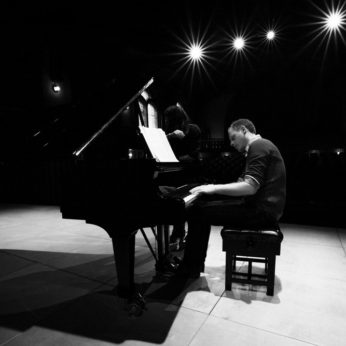Composer: Hector Berlioz (b. 1803 - d. 1869)
Performance date: 06/07/2019
Venue: St. Brendan’s Church
Composition Year: 1840 - 1841
Duration: 00:27:06
Recording Engineer: Gar Duffy, RTÉ
Instrumentation: vn, pf
Instrumentation Category:Duo
Artists:
Caroline Melzer -
[soprano]
Joseph Middleton -
[piano]

The
origins of this incomparable song cycle are unclear, despite the many sources
available on Berlioz, including his own prolific writings. Unusually for
Berlioz, the years 1840-1842 are poorly documented and have been called his mystery
years, even though he was busy throughout the period. Information on Les
Nuits d’Été is particularly thin. A manuscript copy of the opening song Vilanelle
is dated March 23rd 1840 and two songs, Absence and Le
spectre de la rose, were scheduled for a concert in November 1840, though
in the end they were withdrawn. The cycle began as four songs with the other
two added later. The full set was published in the middle of 1841. Later the
Swiss publisher Rieter-Biedermann commissioned Berlioz to orchestrate the
songs. His friend, the poet and critic Théophile
Gautier [1811-1872], had written the verses, published in 1838.These were
difficult times for the composer: his marriage to Limerick actress Harriet
Smithson was breaking up and he was beginning a relationship with
Spanish/French singer Maria Recio, who performed some of the songs but there is
no evidence of any direct connection between the music and his personal life.
The
cycle begins with a Villanelle, (Allegretto) – an old strophic
Neapolitan song format. Berlioz exhibits a magically light touch, both vocally
and in the accompaniment. It is followed by the longest of the songs, Le
spectre de la rose (Adagio un poco lento e dolce assai), this is a
reflection in an operatic style on the short life of a rose worn at the
previous night’s ball. The mood of passionate yearning is conjured up with
great skill. Sur les lagunes (Andantino) was also set by Fauré,
and is subtitled Lament. It is a nocturnal barcarolle, as the poet
bewails the death of his beloved. Maria
was a frequent singer of Absence (Adagio); possibly the finest song in
the set, it is treated quite simply but with great soul and its spine-tingling
pianissimo repetitions of Reviens stay long in the mind. The fifth song Au
cimetière (Clair de Lune) is set in a moonlit graveyard (Andantino non
troppo lento) and Berlioz maintains his nocturnal mood, employing unusual
harmonies to create an ethereal atmosphere. The cycle ends in a more up-beat
mood with the Unknown
Island (Allegro
spiritoso) as the poet yearns to visit the elusive island where love is
eternal.
Copyright © 2024 West Cork Music. All rights reserved.
Designed and developed by Matrix Internet